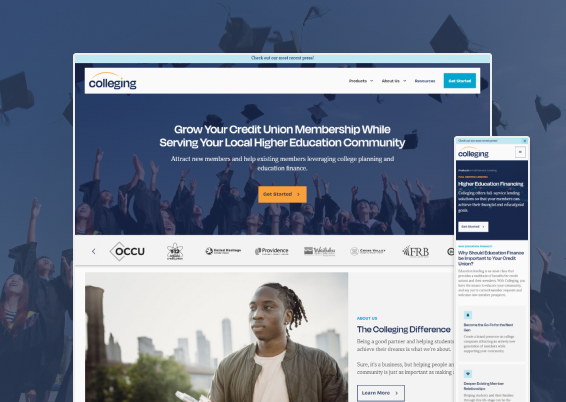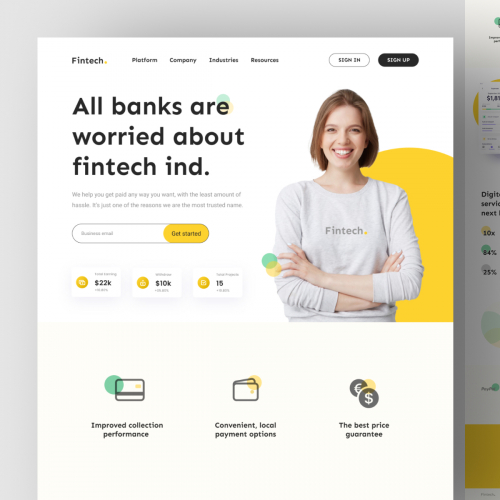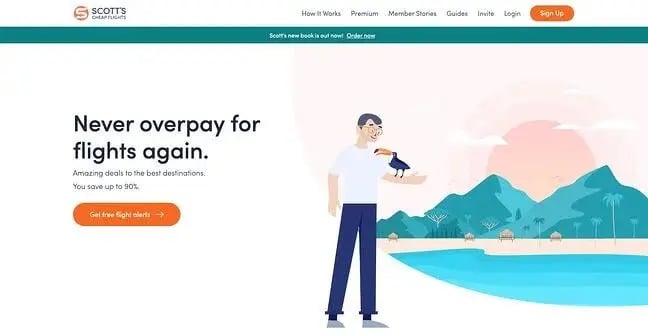Typical Errors to Avoid in Website Design
Typical Errors to Avoid in Website Design
Blog Article
The Power of User-Centered Web Site Layout in Growing Your Online Audience
In an increasingly affordable electronic landscape, the relevance of user-centered website design can not be overstated. By focusing on the needs and actions of users, businesses can develop websites that not only bring in however additionally engage a varied audience. Efficient design principles-- such as instinctive navigation and availability-- are necessary in promoting customer contentment and commitment. Nonetheless, recognizing exactly how to leverage these principles effectively elevates vital concerns about execution and impact. What techniques can organizations embrace to ensure their layouts reverberate with customers and ultimately drive development?

Understanding User-Centered Layout
User-Centered Layout (UCD) is a fundamental approach to site advancement that prioritizes the needs, preferences, and habits of end users throughout the style process. This method emphasizes recognizing individuals deeply-- with research methods such as meetings, studies, and usability screening-- to create a site that reverberates with them. By including user feedback at every stage, designers can make certain that the last item aligns carefully with user expectations.
UCD advertises repetitive style, where prototypes are examined and fine-tuned based upon user communications and experiences. This cycle not just improves use yet likewise promotes a sense of ownership amongst customers, as they feel their input is valued and impactful. Additionally, UCD aids recognize possible barriers and discomfort points in the user trip, permitting designers to address these difficulties proactively.
Eventually, accepting UCD leads to web sites that are more intuitive, interesting, and reliable. By placing customers at the facility of the layout procedure, organizations can create digital experiences that not just attract but additionally preserve their target audience, driving greater fulfillment and commitment. In an affordable on-line landscape, this strategy is necessary for achieving sustained success.
Secret Concepts of User Experience
An effective customer experience (UX) rests on numerous vital principles that direct the design procedure and boost communication between users and the website. Functionality is critical; the internet site should be intuitive, allowing individuals to navigate quickly and find details promptly. This consists of clear labeling and a logical framework that minimizes cognitive lots.
Second of all, access plays a vital duty in making sure that all customers, despite their handicaps or abilities, can properly engage with the web site. Integrating alt text for pictures, keyboard navigating, and display viewers compatibility cultivates inclusivity.
Consistency is one more vital concept. A cohesive design language, from color pattern to typography, helps customers develop familiarity and trust with the internet site (Website Design). It likewise reinforces brand identification
Additionally, responses devices are essential. Customers should receive immediate and clear feedbacks to their actions, whether through aesthetic hints or verification messages, which enhances their confidence in navigating the site.
Lastly, mobile responsiveness can not be ignored. With a boosting variety of customers accessing sites by means of mobile gadgets, a design that adapts effortlessly to numerous screen sizes is crucial for maintaining a favorable user experience.

Advantages for Online Interaction
Efficient online interaction offers countless benefits that can dramatically enhance a site's overall performance - Website Design. By promoting significant interactions between individuals and the site, organizations can grow a faithful audience that returns with consistency. Involved individuals are more most likely to share material, consequently enhancing natural reach and attracting new visitors with word-of-mouth promo
Boosted online involvement also brings about improved user satisfaction. When customers locate a web site that resonates with their requirements, they are much more likely to explore its offerings thoroughly, which can lead to higher conversion prices. Furthermore, interesting material motivates customers to invest more time on the website, reducing bounce rates and positively affecting search engine ranking algorithms.
In addition, reliable interaction provides very useful understandings right into individual preferences and behaviors (Website Design). By examining individual interactions, organizations can tailor their web content and layout strategies to fulfill the evolving expectations of their target market. This adaptive approach not just increases engagement but likewise strengthens the brand name's reputation as receptive and user-centric
Ultimately, prioritizing online involvement via user-centered layout develops a flourishing environment where both the company and the target market benefit, resulting check this in continual growth and success in the digital landscape.

Strategies for Efficient Style
To maximize the advantages of online involvement, utilizing specific strategies in internet site layout is critical. Initially, intuitive navigation is necessary; individuals should easily locate information without confusion. A well-structured menu, clear tags, and a sensible hierarchy boost the individual experience and reduce read bounce prices.
Second, receptive style is important in today's multi-device setting. Making sure that a site adjusts seamlessly to various display sizes cultivates ease of access, therefore fitting a wider target market. This flexibility not just boosts customer satisfaction but additionally favorably influences online search engine rankings.
Third, using visual hierarchy guides customers' interest to vital aspects, such as phone call to action (CTAs) Utilizing contrasting colors, varying font dimensions, and calculated spacing can properly guide customers towards wanted actions, promoting higher interaction.
Furthermore, applying consistent branding across all web pages constructs depend on and acknowledgment. A natural shade scheme, images, and typography reinforce brand identification and create a professional appearance.
Finally, enhancing loading speeds is necessary. Individuals are less most likely to engage with a slow-loading site, making performance optimization a crucial facet of efficient design. By incorporating these techniques, site makers can improve customer experience and eventually grow their on-line audience.
Real-World Success Stories
Success stories in user-centered web site design show the tangible advantages of focusing on customer experience. As a result, they experienced a 250% increase in online donations, showing exactly how an instinctive layout can drive individual involvement and assistance.
An additional compelling situation is that of Airbnb, which used user-centered layout principles to boost their reservation procedure. By streamlining the individual trip and integrating tailored suggestions, they significantly reduced website abandonment prices. This concentrate on individual experience added to a revenue development of over 70% in a single year, underscoring the connection between well-designed interfaces and financial success.
Additionally, the ecommerce giant, ASOS, carried out individual screening to refine their mobile application. By resolving user discomfort factors, they achieved an impressive 30% rise in mobile sales. These examples highlight that buying user-centered design not just boosts customer satisfaction yet also drives concrete business outcomes, enhancing the important function of user experience in achieving online development.
Conclusion
In conclusion, user-centered web site layout offers as an important pop over to these guys method for boosting online target market engagement. By focusing on individual needs and choices, businesses can create easily accessible and user-friendly digital experiences that promote commitment and drive conversions. The assimilation of customer responses throughout the design procedure not just decreases bounce rates but also urges exploration. Eventually, adopting effective user-centered layout concepts can considerably add to a company's success in a competitive electronic landscape.
User-Centered Layout (UCD) is an essential approach to site growth that focuses on the requirements, choices, and actions of end users throughout the style procedure. By incorporating customer responses at every stage, designers can ensure that the last item lines up very closely with user assumptions.
An effective customer experience (UX) pivots on numerous vital principles that lead the style process and boost interaction in between customers and the site.Success stories in user-centered web site style show the substantial advantages of prioritizing individual experience. These examples highlight that investing in user-centered style not just boosts individual contentment but likewise drives tangible company results, strengthening the crucial role of customer experience in achieving on the internet growth.
Report this page